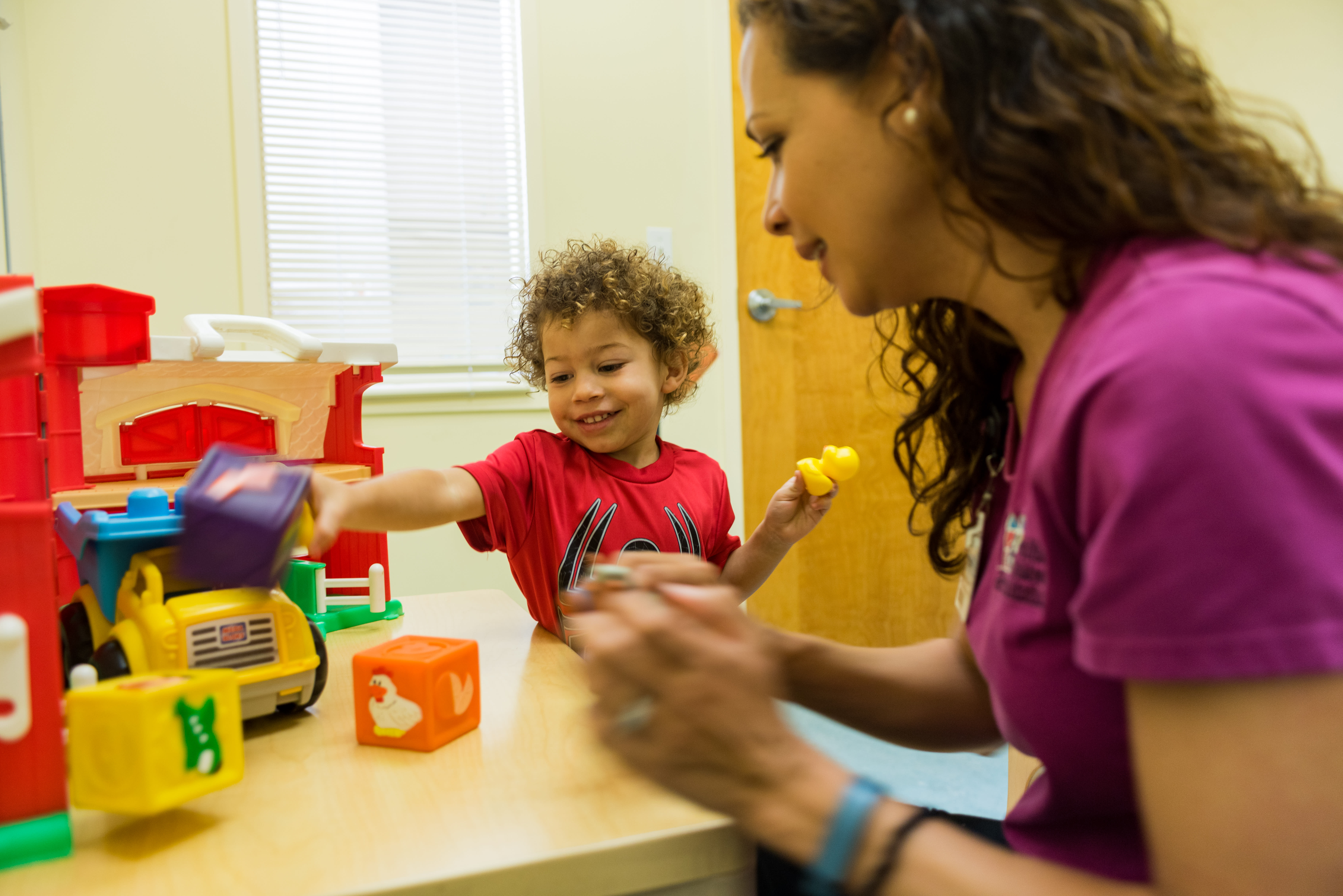Wolfson Rehabilitation
Call us for more information and to schedule your child's first appointment at any location

A child's main occupation is to play and learn, and occupational therapy focuses on just that by helping children perform daily activities like dressing themselves, feeding themselves and playing.
Experienced occupational therapists at Wolfson Children’s Hospital evaluate your child's skills in the areas of play, fine motor control and self-care. We then create a plan together with you so your child can better perform daily activities at home and at school.
We use age-appropriate, purposeful activities to minimize the effects of disease, injury, congenital (at birth) defect, disability or developmental delay so your child can live and learn at his or her full potential. We collaborate closely with your child’s primary care physician, other health care professionals and you to give your child outstanding care.
Call us for more information and to schedule your child's first appointment at any location
Your child may need occupational therapy if you see any of the following signs:
Call us for more information and to schedule your child's first appointment at any location
The experienced occupational therapists at Wolfson Children’s Hospital help children with a wide range of conditions including or linked to:
Each child has their own personalized occupational therapy plan. Your child’s plan might include:

Drew Bradbury Center
841 Prudential Drive
Suite 140
Jacksonville, FL 32207
904.346.0394
Baptist South Medical Office Building 3
14534 Old St. Augustine Road
Suite 3330
Jacksonville, FL 32258
904.292.1808
Wilson-Epstein Center
1320 Roberts Drive
Jacksonville Beach, FL 32250
904.627.1480
Wolfson Children's Specialty Center
1747 Baptist Clay Drive
Suite 100
Fleming Island, FL 32003
904.516.1800
Wolfson Children's Specialty Center
3650 NW DeVane Street
Lake City, FL 32055
386.758.1811

After a fall from a tractor, RT's hand had two broken metacarpals, which are the bones that make up the palm.